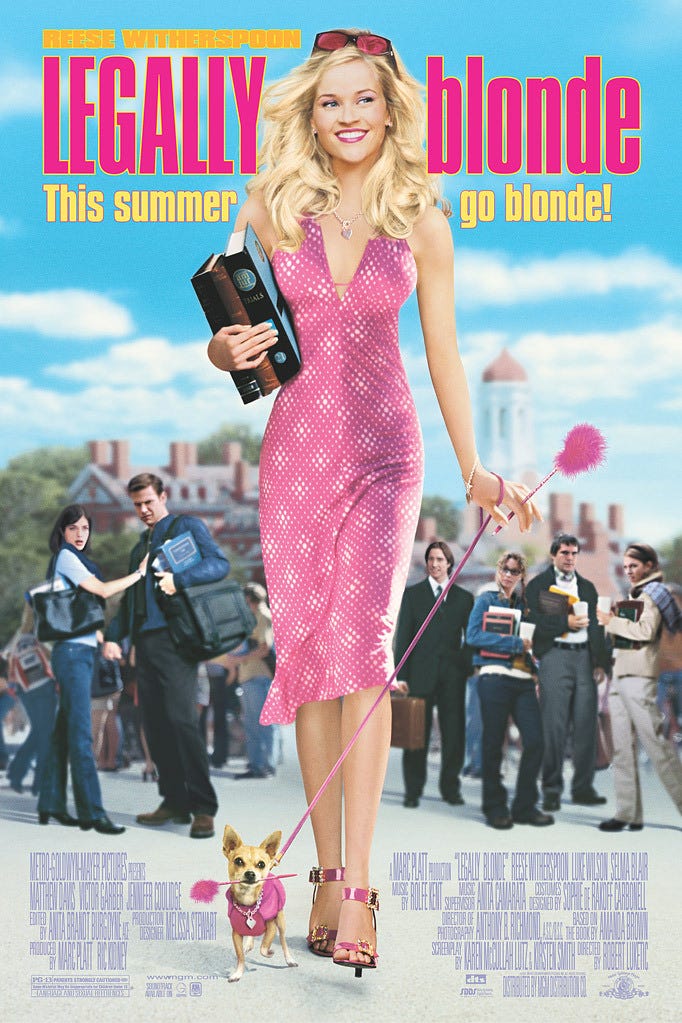Everyone has that one movie that just really shapes who they are, for me that film is Legally Blonde. This week, I thought we could switch things up with a film analysis for this masterpiece that was recently re-added to Netflix. Released in 2001 Legally Blonde appears to be your classic chick-flick, but this film actually takes a good hard look at the power of clothes and the ways in which we underestimate women based on how they present themselves.
Legally Blonde examines toxic masculinity, internalized misogyny, and the treatment of women in academia while also being in my opinion the best-styled film of all time.
Legally Blonde challenged the ways we look at women in academic fields and forces the viewer to examine if they have any internal biases against women based on how they present themselves. Tanya Pai from Vox said it best, “Legally Blonde is a feminist romance between a woman and her own best self”, few other films capture the plight of womanhood in such a beautiful, silly, and stylish way.
While in many ways Elle Woods is the embodiment of white, wealthy, conventionally attractive privilege, she’s also a remarkable ally. Throughout the film, she supports a friend who is escaping a dangerous relationship, provides support to a neuro-divergent peer, calls out misogyny and classism, and reckons with her own problematic views of the world. Considering the early 2000’s from an activist standpoint Elle Woods was ahead of her time.
Additionally, the significance of the color pink in this film is a feminist statement in it of itself. Society views girlie, pink women as people who cannot be taken seriously or aren't intelligent. However, as Elle discovers she is more than her appearance she doesn’t lose sight of her love for fashion and the color pink, even winning her first court case in a pink dress. Film often lacks multidimensional, complicated, independent female characters, but Elle Woods embodies all of those qualities and more.





